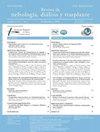老年人:肾病还是衰老?巨大的CKD-EPI量表。对老年人的态度。
IF 0.2
4区 医学
Q4 UROLOGY & NEPHROLOGY
引用次数: 0
摘要
前言:老年人的肾脏状况的方法需要诊断工具,这一年龄组,允许辨别其肾脏状况之间的慢性和衰老。本研究的目的是分析HUGE量表是否可以作为确定门诊老年患者是否存在慢性肾脏疾病的辅助工具。方法:本研究采用观察性、分析性和横断面研究方法,在2015-2018年武备第一专科医院肾内科门诊开展。结果:纳入285例患者。慢性肾脏疾病的患病率在75岁以上人群中较高(60.7%)。使用HUGE配方,37%的男性和60%的女性(P = 0.002)患慢性肾脏疾病的比例低于CKD-EPI配方(分别为83%和89%)。HUGE公式的特异性高于CKD-EPI和MDRD公式(分别为97%、80%和79%),具有最高的判别能力(NPV为70%)。高尿酸血症和糖尿病与慢性肾脏疾病的发展有关。结论:本研究表明,HUGE配方有助于识别老年人肾小球滤过度因衰老而下降的肾脏疾病患者。此外,在老年人慢性肾脏疾病的治疗中,推荐使用HUGE配方作为辅助工具。本文章由计算机程序翻译,如有差异,请以英文原文为准。
Older adults: Kidney disease or senescent aging? HUGE vs. CKD-EPI scale. The approach to the elderly.
Introduction: The approach to the renal condition of the elderly requires diagnostic tools for this age group, which allow discerning its renal condition between chronicity and senescence. The objective of this research was to analyze whether the HUGE scale is a companion tool to determine the existence of chronic kidney disease in older adult patients seen in outpatient clinics.
Methods: This observational, analytical and cross-sectional study was carried out in the nephrology outpatient clinic of the Specialty Hospital of the Armed Forces No. 1 in 2015-2018.
Results: We included 285 patients. The prevalence of chronic kidney disease was higher in people older than 75 years (60.7%). With the HUGE formula, a lower proportion of chronic kidney disease was established in 37% of men and 60% of women (P = 0.002) than in the CKD-EPI formula (83% and 89%, respectively). The specificity achieved by the HUGE formula was higher than the CKD-EPI and MDRD formulas (97% vs. 80% vs. 79%, respectively), having the highest discriminative capacity (NPV 70%). Hyperuricemia and diabetes mellitus are associated with the development of chronic kidney disease.
Conclusions: In this research, it was shown that the HUGE formula helps discern those older adults with decreased glomerular filtration due to senescent aging in those with kidney disease In addition, The use of the HUGE formula is recommended as a complementary tool in the approach to chronic kidney disease in older adults.
求助全文
通过发布文献求助,成功后即可免费获取论文全文。
去求助
来源期刊

Revista De Nefrologia Dialisis Y Trasplante
医学-泌尿学与肾脏学
CiteScore
0.30
自引率
50.00%
发文量
34
审稿时长
>12 weeks
期刊介绍:
Publicación propiedad de la Asociación Regional de Diálisis y Trasplantes Renales de Capital Federal y Provincia de Buenos Aires. Tenemos el agrado de informar a la comunidad nefrológica que la Revista de Nefrología, Diálisis y Trasplante acaba de ser seleccionada para ingresar a partir del 2005 a las bases bibliográficas de datos de Elsevier , que incluyen: EMBASE / Excerpta Médica, Compendex, Geobase y Scopus También se encontrará en ScienceDirect navigator, en otras bases de datos especializadas y en Mosby yearbooks.
 求助内容:
求助内容: 应助结果提醒方式:
应助结果提醒方式:


